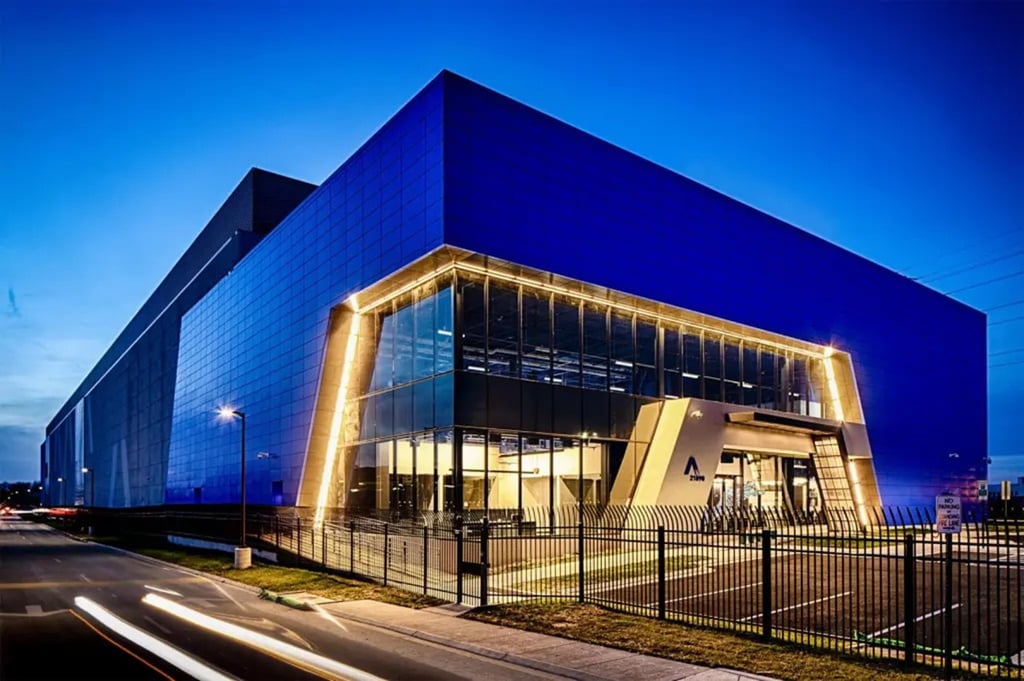Datamation content and product recommendations are
editorially independent. We may make money when you click on links
to our partners.
Learn More
More and more companies are virtualizing their environments, with many achieving 90% virtualization rates and higher. Server consolidation and virtualization provides big business advantages including dynamic application environments, drastically increasing virtual servers with fractional hardware increases, and boosting application performance.
However, this rosy picture has its dark underside. One of the major challenges in growing virtualized environments is deciding between conventional backup and virtual-specific backup.
Conventional backup does in fact work for VMs and retains some advantages over virtualization-specific backup. Conventional backup administrators can extend existing backup interfaces and policies they use for physical servers. It grants granular recovery that a machine-image backup might not provide, it optimizes for specific applications, and administrators do not have to support two distinct backup products for their physical and virtual environments.
However, virtualized servers pose a unique problem to conventional backup: VMs are dynamic, not static. Once created they may remain for days, weeks or months – or minutes. It becomes very challenging backup reliably in this quickly changing environment. Resource contention is also a problem: the process-hungry and intensive data output of VMs makes conventional backup harder to operate with backup time limits. The inability to clone VMs using conventional backup software is another shortcoming.
Virtual-specific backup can solve these problems by minimizing resource contention, accelerating backup speed and cloning VMs. But it is not a perfect solution, and can have issues around deduplication, granular restore, and observing RPO and RTO for high priority applications.
Nothing is Perfect: Issues on Both Sides of the Backup Divide
Let’s take a closer look at some of these issues surrounding conventional and virtual-specific backup.
· Resource Contention. Physical and virtual environments differ radically in their average CPU utilization. Traditional physical servers operate at a comfortable 10-30% CPU utilization but virtualized servers will typically utilize 80% or more of their physical resources. .
This high utilization rate enables fast VM creation and performance but plays havoc with backup. The resulting resource contention becomes a real issue for VM performance and backup cycles. Installing an agent on the physical machine only, reserving server resources for the backup process, and/or and scheduling staggered backups for the VMs helps considerably. Virtual-only backup with its fast image backups will have much less of an issue with resource contention than conventional.
· Granular recovery. Conventional backup applications can restore granularly with a variety of restore options including file and folder, and sometimes server or object. But many virtual backups work using a fast snapshot technology to create a VM image. This works out beautifully for backup performance, when restoring an entire VM, or cloning VMs. It is not so beautiful when you need a granular restore.
Databases running on VMs have tight recovery point objectives (RPOs) and fast recovery time objectives (RTOs). Since most virtual-specific backup must restore entire VM images, this becomes an issue for service level requirements on high-priority applications. Some virtual-specific vendors can restore single files from the snapshot and many are working towards it, but this is not yet a universal feature.
· Treating VMs as separate backup sources. Most conventional backup administrators must install backup agents on each VM. This becomes a major obstacle to backup performance in large and dynamic virtual environments. Economics come into play too, with many backup vendors pricing per server license – not just the underlying physical server but every VM using that backup software. And this VM-centric backup process initiates separate backup for each VM; hardly a good use of limited CPU resources.
· Dynamic virtual environments. Dynamic VMs can also be a big challenge to conventional backup. Large installations with hundreds to thousands of dynamic VMs and dozens to hundreds of physical machines have their own issues with workload distribution, and backup can get very tricky. Backing up temporary VMs consumes resources, and backing up VMs that move between physical machines requires the ability to restore to the VM wherever it occurs.
· Backup storage capacity. Storage capacity poses a particular challenge for virtual-specific backup. Nearly all conventional backup products use dedupe to avoid backing up duplicate files or objects. But virtual backup usually reads the image file as a unique object not subject to dedupe, which quickly consumes backup tor capacity. The virtual snapshot is seen as a new file so it is backed up in its entirety, regardless of how much data has actually changed since the last snapshot. Vendors are working to add dedupe capabilities to virtual-specific backup but it is not yet widely available.
Asking the Right Questions
There is no one answer to the question: “Should I invest in conventional backup for my physical and virtualization backup, or invest in two different backup products?” Analyze your environment to answer questions like these:
1. What percentage of my servers are virtualized? What rate of virtualization growth do I anticipate? A present or near-term 80% virtualization rate is a positive for virtual-specific backup performance.
2. How many critical applications are virtualized? If you have virtualized high-priority applications or plan to, then look for backup with granular restore.
3. What is my available storage capacity? A limited or moderate amount of capacity will quickly run out without the ability to dedupe virtual backups. If you choose to go with a virtual-specific backup lacking dedupe, account for higher storage capacity needs.
4. Do I run or plan to run more than one hypervisor? Most backups support VMware and Hyper-V. A few support Citrix Xen as well; be sure to find out the level of backup support if you are a Xen user.
5. Do I have problems load balancing my virtualization environment? Managing workloads and resources is a common problem in growing virtualized environments. If this is true for you, look to agentless backup.
Vendor Landscape
Quantum’s vmPRO family works across physical and virtual servers to provide backup, replication and long-term data retention tools. Quantum pushes its DXi disk based backup appliances as part of the deal.
VMware and Microsoft offer virtual backup tools for their respective hypervisors: VMware Consolidated Backup (VCB) or Microsoft Virtual Machine Manager (VMM). (VMM works in VMware environments too.) Both backup applications capture point-in-time snapshots of the VMs. What they do, they do well: fast full image backup without quiescing the VM. This allows for fast restoration of an entire VM and cloning VMs to create new ones. Administrators can extend value by integrating the tools with other software; for example, Windows Server 2012 introduced Hyper-V Replica to replicate VMs for disaster recovery.
Symantec primarily provides virtual and physical backup with data protection warhorse Backup Exec. Symantec also offers Backup Exec System Recovery, since renamed Symantec System Recovery 2013 (SRR). SRR offers block-based image backup and restore for virtualized environments and complements Backup Exec’s file-based backup. SSR cannot backup to tape but does support Physical-to-Virtual (P2V), Virtual-to-Virtual (V2V), and Virtual to-Physical (V2P) recoveries for flexible recovery scenarios.
As you may imagine, EMC specializes in protecting VMware environments. EMC Protection products integrate dedupe with VMware disk backup, which answers the no-dedupe objection to virtual-only backup. EMC Protection crosses product families including EMC Networker, Data Domain, dedupe portfolios, and integration for Hyper-V.
Veeam is the leading third-party backup contender for virtualized environments only. Veeam offers image-based backup and replication that allows granular restores to suit RPO requirements. Of course, the trade-off is that Veeam does not support physical server backup and likely never will. Unless a customer is 100% virtualized, which few companies are, they will still need another backup for their non-virtualized servers.
Acronis Backup & Recovery 11.5 Virtual Edition is part of Acronis’ True Image family for virtualized environments. The product is agentless and a single console runs backup and recovery on an unlimited number of VMs. Acronis’ messaging concentrates on cost and time savings for virtual environment data protection.
Zetta provides cloud-based physical and virtual backup. Zetta automates backup with simultaneous dual pathing to local storage and the cloud. The local backup path enables instant recovery for databases and VM backup while the cloud backup provides DR protection web-based access for remote users. Zetta technology is particularly effective at moving large data sets across the WAN.
NovaStor NovaBACKUP family protects physical and virtual machines. NovaBACKUP DataCenter backs up and restores mixed virtual/physical environments at enterprise sites. It supports policies such as including or excluding active or inactive VMs. NovaStor supports VMware and Hyper-V and offers a file-level restore for VMware. Bare metal recovery features and the ability to backup to tape or disk round out the offering.
Photo courtesy of Shutterstock.
-
Huawei’s AI Update: Things Are Moving Faster Than We Think
FEATURE | By Rob Enderle,
December 04, 2020
-
Keeping Machine Learning Algorithms Honest in the ‘Ethics-First’ Era
ARTIFICIAL INTELLIGENCE | By Guest Author,
November 18, 2020
-
Key Trends in Chatbots and RPA
FEATURE | By Guest Author,
November 10, 2020
-
Top 10 AIOps Companies
FEATURE | By Samuel Greengard,
November 05, 2020
-
What is Text Analysis?
ARTIFICIAL INTELLIGENCE | By Guest Author,
November 02, 2020
-
How Intel’s Work With Autonomous Cars Could Redefine General Purpose AI
ARTIFICIAL INTELLIGENCE | By Rob Enderle,
October 29, 2020
-
Dell Technologies World: Weaving Together Human And Machine Interaction For AI And Robotics
ARTIFICIAL INTELLIGENCE | By Rob Enderle,
October 23, 2020
-
The Super Moderator, or How IBM Project Debater Could Save Social Media
FEATURE | By Rob Enderle,
October 16, 2020
-
Top 10 Chatbot Platforms
FEATURE | By Cynthia Harvey,
October 07, 2020
-
Finding a Career Path in AI
ARTIFICIAL INTELLIGENCE | By Guest Author,
October 05, 2020
-
CIOs Discuss the Promise of AI and Data Science
FEATURE | By Guest Author,
September 25, 2020
-
Microsoft Is Building An AI Product That Could Predict The Future
FEATURE | By Rob Enderle,
September 25, 2020
-
Top 10 Machine Learning Companies 2020
FEATURE | By Cynthia Harvey,
September 22, 2020
-
NVIDIA and ARM: Massively Changing The AI Landscape
ARTIFICIAL INTELLIGENCE | By Rob Enderle,
September 18, 2020
-
Continuous Intelligence: Expert Discussion [Video and Podcast]
ARTIFICIAL INTELLIGENCE | By James Maguire,
September 14, 2020
-
Artificial Intelligence: Governance and Ethics [Video]
ARTIFICIAL INTELLIGENCE | By James Maguire,
September 13, 2020
-
IBM Watson At The US Open: Showcasing The Power Of A Mature Enterprise-Class AI
FEATURE | By Rob Enderle,
September 11, 2020
-
Artificial Intelligence: Perception vs. Reality
FEATURE | By James Maguire,
September 09, 2020
-
Anticipating The Coming Wave Of AI Enhanced PCs
FEATURE | By Rob Enderle,
September 05, 2020
-
The Critical Nature Of IBM’s NLP (Natural Language Processing) Effort
ARTIFICIAL INTELLIGENCE | By Rob Enderle,
August 14, 2020
SEE ALL
DATA CENTER ARTICLES







